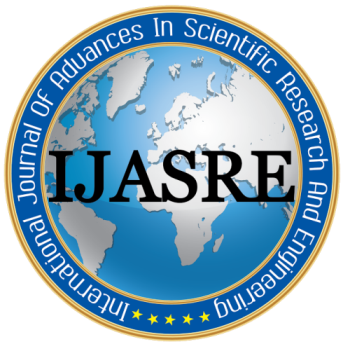Assessing the Impact of Solid Organic Waste in Mezam River in the Bamenda Municipality
DOI:
https://doi.org/10.31695/IJASRE.2018.32904Keywords:
Solid waste, Mezam River, Bamenda municipality, Bacteriological parameters, Physico-chemical parametersAbstract
A survey was carried out involving 100 households randomly selected from the banks of the Mezam River. A waste characterization study and direct observations were also carried out to determine the different waste fractions and the disposal routes for the municipal solid waste (MSW). Laboratory analyses for physiochemical and biological parameters were conducted to determine the water quality of the Mezam River. Results indicated that 24% of households dumped their wastes into rivers, streams and drains with the biodegradable food debris being the most dominant waste fraction. The Mezam River was slightly contaminated at the inlet into the Bamenda city, but highly contaminated at the outlet. There was also an increase of total coliform from 47cfu/100ml to >100cfu/100ml at the inlet and 54cfu/100ml to >100cfu/100ml at the outlet. The values for the BOD increased from 0.2mg/l to 18.6mg/l and from 0.2mg/l 17.9mg/l at the inlet and outlet respectively. With regards to physiochemical parameters, we observed a decrease in the pH from 8.2 to 5.2 and 8.4 to 5.37 for both the inlet and outlet of the Mezam River. The Pb values for both the inlet and outlet increased from 0.00mg/l to 0.6mg/l and 0.00mg/l to 0.54mg/l. These values were greater than WHO recommended standards hence unacceptable for drinking water.
Downloads
How to Cite
Issue
Section
License
Copyright (c) 2018 Oben Mbeng L., Sama Cyril, Agbor Ebai Maurice T

This work is licensed under a Creative Commons Attribution-NonCommercial 4.0 International License.







